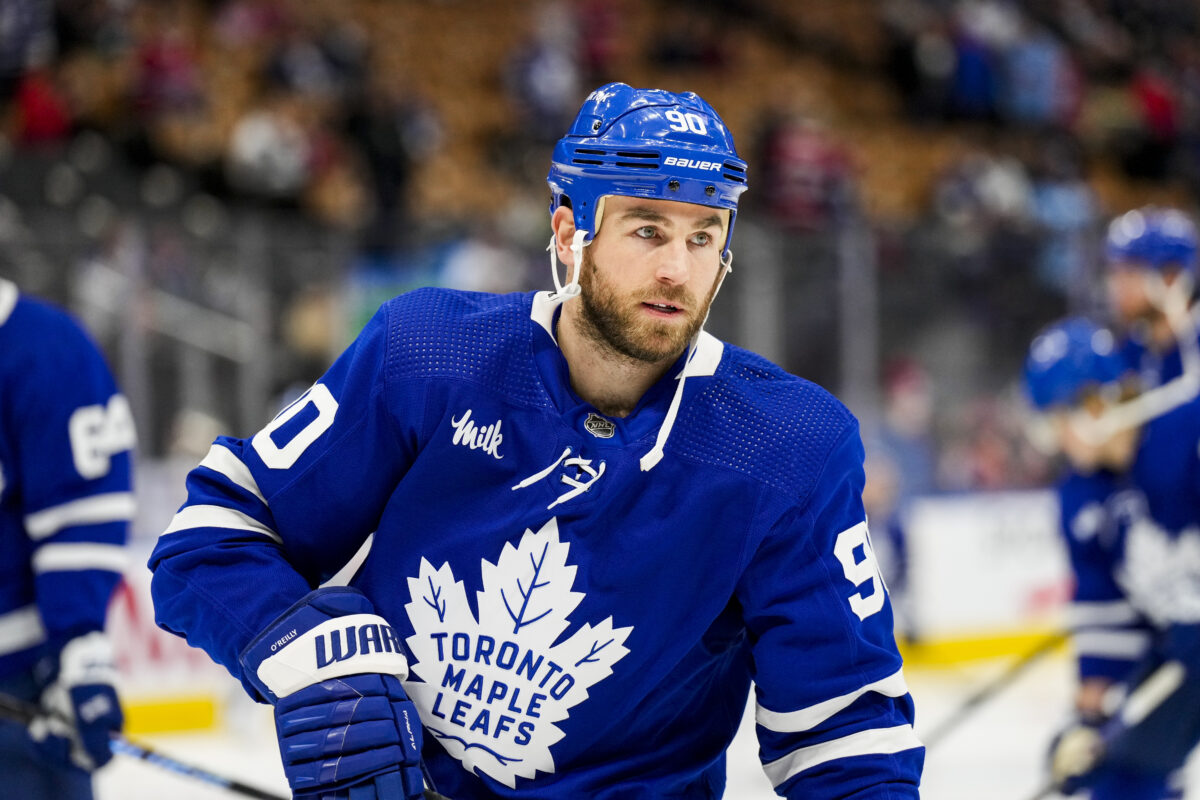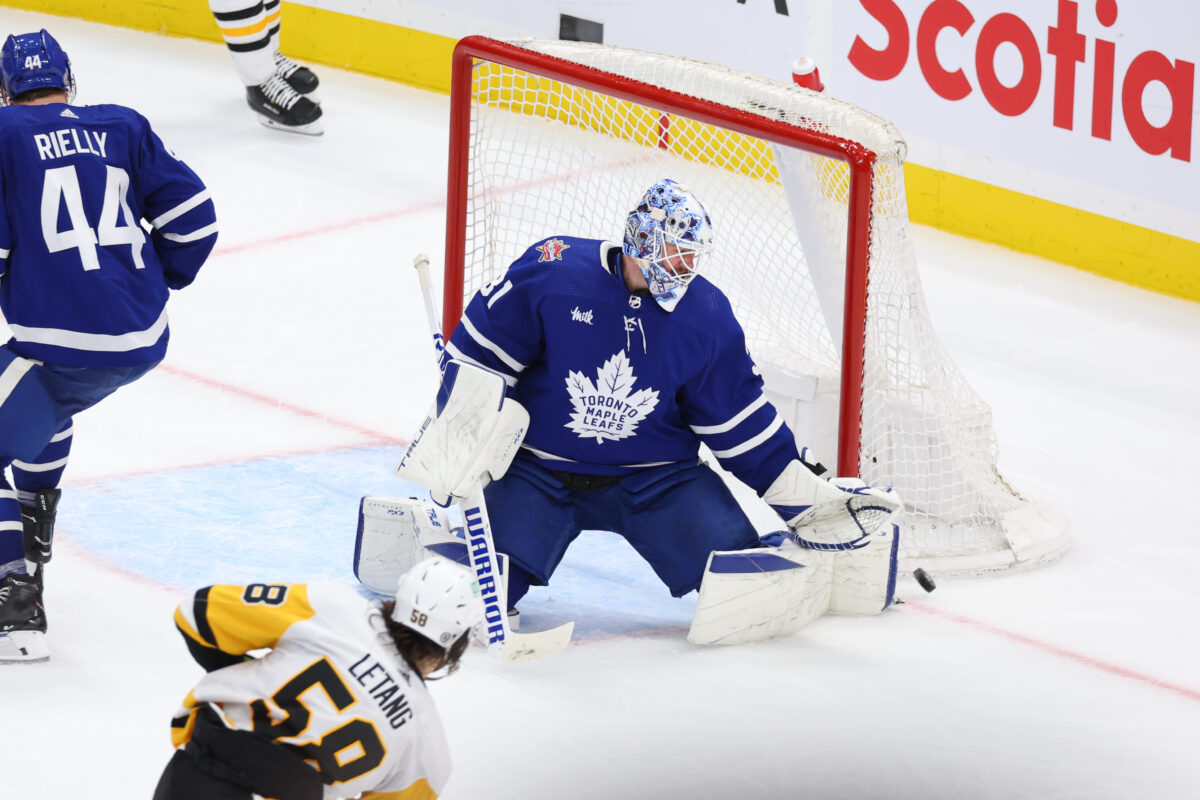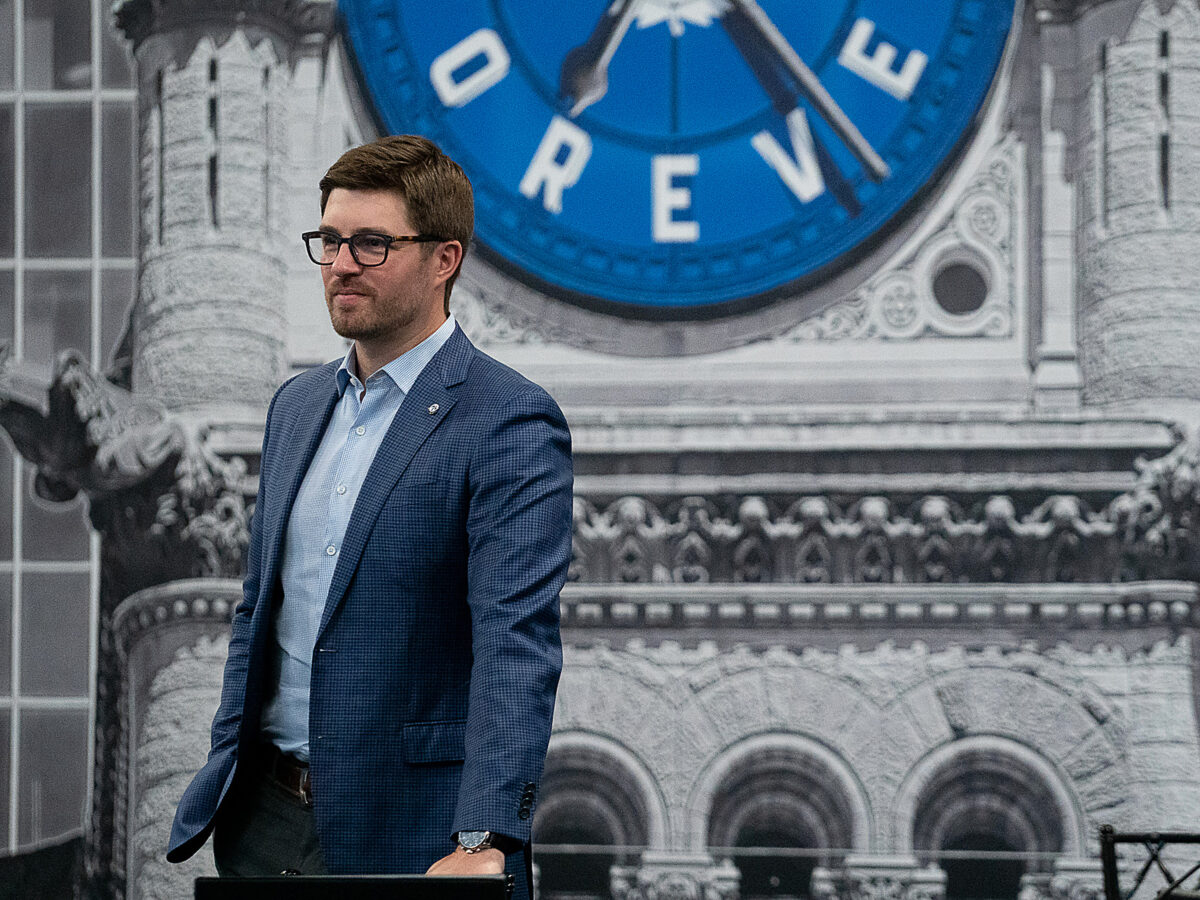According to NHL insider Elliotte Friedman, the Toronto Maple Leafs are considering the team’s current makeup. Despite being anticipated buyers leading up to the NHL Trade Deadline (as they always seem to be) and in the playoff conversation, Friedman believes that doubts have emerged about the team’s willingness to go all-in for a Stanley Cup run.
Friedman asserts that this might not be the season for the Maple Leafs to make significant moves. He suggests that the Maple Leafs are contemplating a more extensive, longer-term strategy rather than a shorter-term leap toward success. He doubts that the team will be going for the home run – the one player or players who can be a tipping point for the team at the trade deadline.
Related: Remembering Maple Leafs’ Goalie Jonathan Bernier
Friedman believed that, before William Nylander’s signing, the team went around the NHL trying to pry a stud defenceman away from another team that made similar money to Nylander. If he was right, he also hinted that the Maple Leafs would have moved Nylander for such a player in a blockbuster trade. However, he believed that, because those players were not found, the team decided to sign Nylander and use him as a lynchpin and are building the roster around him for the long term.
As Friedman notes, he believes the team doesn’t feel it is strong enough this season to win. As a result, they are not going “all-in” in a way that seems to have become a traditional narrative in the NHL. The Maple Leafs will not be looking for a high-profile player who might drag this lineup over the top this year. Instead, the team has decided to stay the course with its current roster and seek “singles” and “doubles” for the blue line at the trade deadline.

(Photo by Kevin Sousa/NHLI via Getty Images)
For the veteran NHL insider, the Nylander signing represented the decision to shape the team’s long-term strategy differently. Now that he’s signed a long-term contract, the organization has made its bed for the future. The immediate implication is that Friedman believes the Maple Leafs will focus on rebuilding its roster around skaters Nylander, Auston Matthews, and Morgan Rielly. In other words, if they are not good enough this season to win it, they’ll look beyond the current season and engage a more strategic, future-thinking approach.
Debunking the Current All-In Narrative: It Doesn’t Work
While Friedman’s observations indicate a shift in the Maple Leafs’ mindset towards a more calculated, long-term strategy, it also prompts a deeper look at the effectiveness of constantly going all-in at the trade deadline. As most NHL fans understand it, the current definition of going all-in is to trade prospects and draft capital for a high-profile rental player on an expiring contract. That player would come to the team for the remainder of the season and the playoffs and become the acquisition that would push a good team over the top to become Stanley Cup winners.
Related: Toronto Maple Leafs Have Lessons to Learn from Nick Foligno’s Debut
The thought is that such players immediately will correlate with a team’s postseason aspirations. However, recent NHL trends, including the Maple Leafs’ signings, challenge this conventional wisdom of depending on trade deadline rentals as a primary strategy. The point is that the strategy simply doesn’t work. It’s been wrong-minded for the Maple Leafs specifically; and, it also hasn’t worked and is wrong-minded for the remainder of the NHL.
Constantly relying on rentals has proven to be a poorer strategy when compared to developing internal depth through the draft or building a strong core nucleus and building around that nucleus. In the Maple Leafs’ current season, the success of cost-effective signings like Simon Benoit, Noah Gregor, and Martin Jones for the Maple Leafs underscore the potential rewards of a more sustainable and strategic approach. These players came at a minimal cost, yet they have provided stability, reliability, and value-added contributions to the team – all on the cheap.
Looking Back 20 Years, What Big-Name Trade Deadline Acquisitions Have Been Tipping Points?
In the NHL over the past two decades, has there been a Stanley Cup winner who brought in a high-profile player who made a difference at the trade deadline? Has a rental player pushed any team over the top in terms of winning the Cup that season? If so, what was the team, and who was that player?
That’s a question I’ve been considering for the past few days. Four days ago, before Friedman’s comments, I wrote a post titled “Maple Leafs Need to Re-Think Trade Deadline Strategy” where I suggested a similar strategy, but for different reasons. I just don’t believe the current “all-in” strategy works. Since then, I’ve been researching to see if there have been instances in the NHL over the past two decades where a high-profile trade deadline rental made a significant impact in helping a team win the Stanley Cup.

(Photo by Gavin Napier/Icon Sportswire via Getty Images)
In the earlier post, I mentioned Nick Paul. The Tampa Bay Lightning brought him in from the Ottawa Senators for Mathieu Joseph and a fourth-round pick in the 2024 Draft on March 20, 2022. Paul turned into a solid postseason performer for the Lightning and (since) a solid roster player for the team. He made a big difference in the postseason. However, he was not at the time a high-profile player and was on an expiring contract of $1.35 million. After seeing his worth, however, the Lightning signed him to a long-term contract valued at $3.15 million through the 2028-29 season.
My research also suggests the Pittsburgh Penguins, who won the 2016 Stanley Cup, traded for left-winger Carl Hagelin from the Anaheim Ducks at the trade deadline (in January 2016, for David Perron and Adam Clendening). Hagelin’s speed and skill played a role in the Penguins’ Stanley Cup victory that season. But he was not a high-profile player at the time and has since retired from hockey.
Related: Today in Hockey History: Jan. 20
As well, the Washington Capitals won the 2018 Stanley Cup. At the trade deadline, they traded for defenceman Michal Kempny from the Chicago Blackhawks. To get him, they gave the Blackhawks a third-round pick in the 2018 Draft. He provided stability to the Capitals’ defensive corps, and his contributions added to the team’s successful run to its first-ever Stanley Cup championship. However, he was not a high-profile player by any means. While he got a bit of a pay jump to $2.5 million in his next contract, he is now home in Czechia playing for Sparta Praha.
The fact is that I did not find a high-profile player who made a difference in a team’s Stanley Cup aspirations since the 2000 season. If I have missed any, I apologize. I simply missed them. But, my research wasn’t fruitful. To my knowledge, not a single trade deadline acquisition has played a pivotal role in a team’s journey to winning the Stanley Cup in almost 25 seasons.
The Last Trade Deadline Acquisition That Made a Difference
The last trade deadline deal of a high-profile player that worked was when the Colorado Avalanche brought in Ray Bourque. Bourque, a legendary defenseman, spent the majority of his Hall of Fame career with the Boston Bruins but hadn’t won a Stanley Cup. At the end of the 1999-00 season, he told the Bruins he wanted a chance to win a championship. To the Bruins’ credit, they traded him to a contender.

(Photo by Denis Brodeur/NHLI via Getty Images)
On March 6, 2000, just at the trade deadline, the Avalanche picked up Bourque and forward Dave Andreychuk from the Bruins for Brian Rolston, Martin Grenier, Samuel Pahlsson, and a first-round draft pick. The trade proved successful for both Bourque and Colorado. The Avalanche beat the New Jersey Devils in that season’s Stanley Cup Final and Bourque finally won the championship he had long desired. He played another season with the Avalanche before he retired.
Why Do NHL Teams Go All-In If It Doesn’t Work?
In recent years, I haven’t found examples of big-name players who came in at the trade deadline and made a difference in winning the Stanley Cup. As a result, I’ve come to believe teams should shift their focus toward bolstering their depth or addressing specific needs rather than making blockbuster moves.
Even if the Bourque trade serves as a model, it’s the only time in 25 years that it’s worked. So, why does a team go for the home run if it’s so costly and only has a four percent chance of making a difference? Despite its historical rarity, teams continue to engage it. But, why?
Related: Rumors Swirl About Maple Leafs Major Upcoming Roster Overhaul
In my opinion, several factors contribute to this wrong-minded approach. Teams with genuine aspirations of winning the Stanley Cup often feel compelled to make bold moves. They believe the acquisition of a star player is a means to cement their chances. Although someone in the organization has to know chances are historically slim, for that team it’s a Hail Mary attempt to beat the odds. Sure, it didn’t work for other teams, but who’s to say it won’t work for our team?
The short-term impact of acquiring rental players, whose contracts expire at the end of the season, is a motivation that just seems too enticing not to try. Teams like the Maple Leafs season after season sacrifice prospects or draft picks for immediate success.
In addition, the fanbase has come to expect their teams to prove their willingness to reward their fans by going all-in. The move generates excitement and confidence in their teams. As such, there’s pressure on management from ownership, fans, or players.
The unique market at the trade deadline also seems to create an inviting dynamic. The conversation starting in December is around which NHL teams will become “buyers” or “sellers.” These annual conversations also seem to carry with them further team expectations for teams to engage in impactful moves.
If the Maple Leafs Stand Pat, It’s Good News for Fans
Friedman’s perspective on the Maple Leafs’ decision not to go all-in at the end of the 2023-24 season should be good news to Leafs Nation. While it deviates from the conventional all-in narrative, it aligns with a strategic approach to building a Stanley Cup contender.
As readers know, I have been a Kyle Dubas fan as a general manager. However, I also admit that, despite his intelligence, he missed the point and succumbed to the allure of misguided decisions at trade deadlines. As a result, he squandered valuable team resources by trading away prospects and draft capital. Imagine what this team might be if it kept all its younger players and draft picks.

The current season demands trust in the core players to lead the team, acknowledging the need for strategic pickups around the edges. The management’s best hope is not to seek a home run, a strategy that seldom succeeds, but to acquire low-cost, quality players that address specific team needs.
The core players must take the lead on the ice; and, while Friedman seems to still lean towards the traditional all-in narrative, the fact that his call that the Maple Leafs will stand pat with the current team it has is the right choice. The best practice is to pursue a strategic and measured approach. The season presents a surprising dilemma for the Maple Leafs; however, it has landed them in the right place.
That path that the Maple Leafs are pursuing, if Friedman is correct about what they will do, is the right way to proceed – albeit for perhaps the wrong reasons. Maybe this team can get them to the Stanley Cup; maybe, it can’t. But the path is, given the historical lack of success for trade deadline all-ins, the right one for this team.
